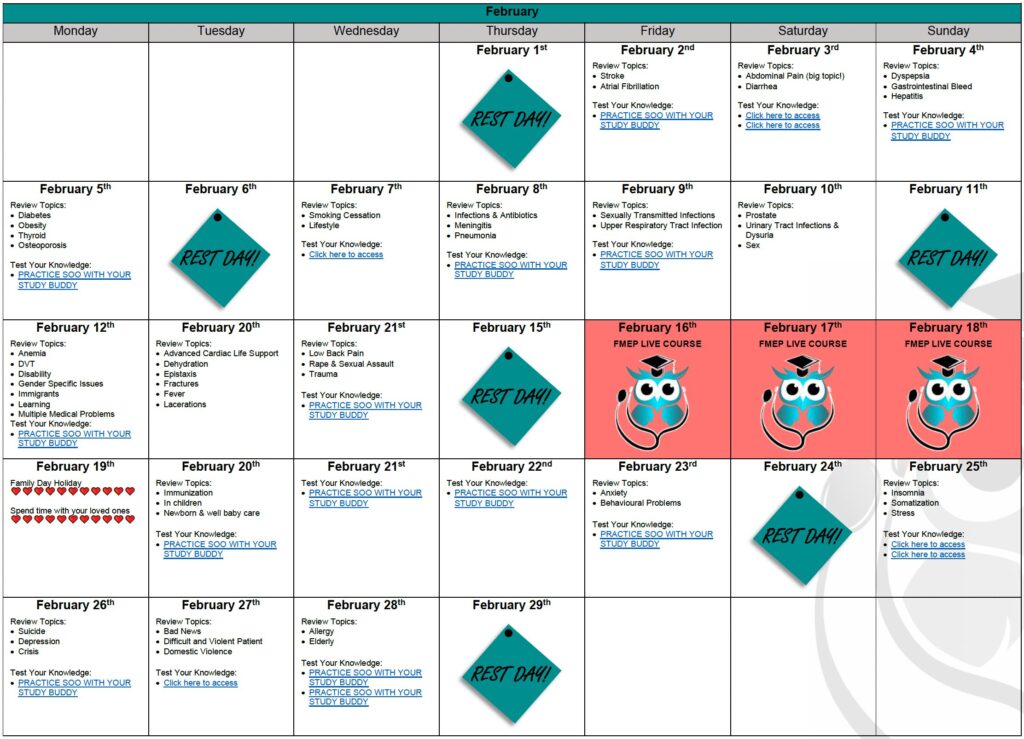
YOUR DETAILED CCFP EXAM STUDY CALENDAR: BE PREPARED!
The CCFP exam is quickly approaching. We know you are juggling many personal and professional...
Comments Off on YOUR DETAILED CCFP EXAM STUDY CALENDAR: BE PREPARED!
Just a reminder… pay attention to the questions. Here are our general tips one more time:
1. Pay attention to the questions. Look carefully at how many items you are being asked to list. If the question asks for five items, you will not get more marks if you list eight items; the examiner will look at the first five and allocate marks only for the first five answers – so be careful. On a SAMP, if it is not clearly stated how many items you should list, look at the amount of points/marks being allocated for the question to get an idea of how many answers the examiner may be anticipating you write down.
2. Do not write lengthy answers. Most questions can be answered in 10 words or less!
3. Be specific when writing down investigations (hemoglobin instead of CBC; CT abdomen instead of CT).
4. Remember that trade names and generic names are both acceptable when writing down medications.
5. For more helpful tips, you can refer to CCFP’s SAMP instructions by clicking here.
SAMP
A 43-year-old female, G1P0, comes into your office. She recently took a home pregnancy test and it was positive. You confirm her pregnancy with a serum BHCG and an US. She has a history of Hypertension and her BMI is 30. She would like to discuss prenatal care with you. (18 points)
1. How much folic acid should a woman take who has a low risk for neural tube defects (NTD)? (1 point)
2. List 3 factors that would increase a woman’s risk of having a fetus with NTD? (3 points)
3. How much folic acid should a woman with a medium risk for NTD take preconception? (1 point)
4. List 1 factor that would be considered high risk for NTD? (1 point)
5. How much folic acid should a woman with a high risk for NTD take preconception? (1 point)
6. List 5 foods you would advise against eating in a woman who is pregnant to reduce her risk of Listeria. (5 points)
7. List 1 food with high mercury content that you would advise against consuming while pregnant. (1 point)
8. List 3 risks associated with maternal obesity in pregnancy. (3 points)
9. When should you screen for gestational diabetes for an otherwise healthy G1P0? (1 point)
10. In women who are Rh negative, what complication can the fetus develop if the mother is not given Rhogam? (1 point)